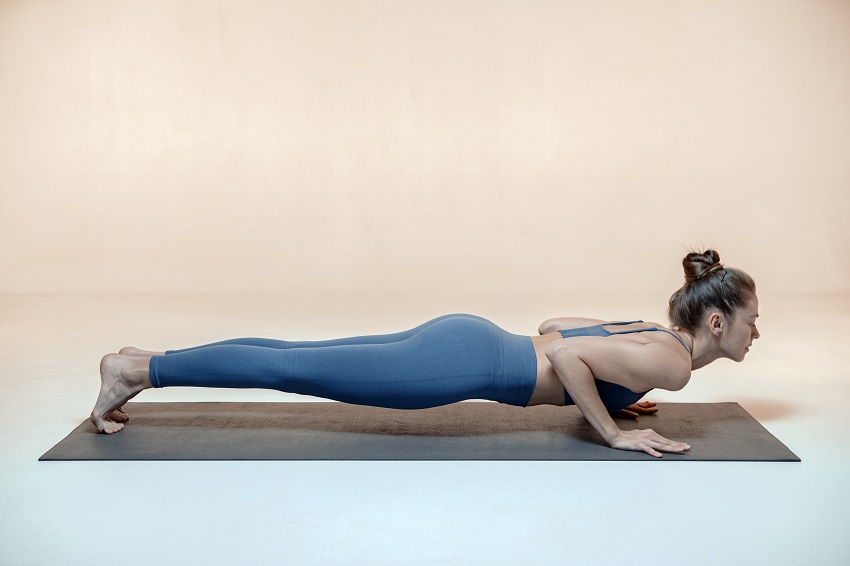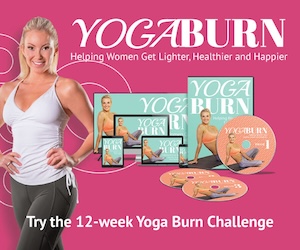Low Plank Pose: (Chaturanga Dandasana)
Name: Low Plank Pose
Sanskrit: Chaturanga Dandasana
Pronunciation: chaht-tour-ang-ah don-dahs-anna
Alternative Names: Low Plank and Four Limbed Staff Pose
Pose Level: Low plank pose is among the considerably challenging yoga postures, yet it’s taught to beginners frequently.
Related Article: Easy To Complete Yoga Sequences For Beginners!

Anatomy Involved:
The main focus points of Chaturanga Dandasana are the shoulders, upper body, and core muscles. However, the whole body gets worked performing this pose.
Benefits:
- During Low plank, almost all the body muscles get a good workout.
- It helps strengthen core muscles which in turn can improve posture
- Dandasana improves your body alignment to rectify body imbalances and unequal weight distribution.
Step-by-Step Instructions:
- Begin in a plank posture with your legs and arms erect. The feet should be hip-distance apart, and the shoulders should be over the wrists. The heels push back while the head extends forward.
- Tighten the core and begin to lower the body. Shoulders should be forward, abdomen in tight;
- Attempt to keep the shoulder drawn back, do not drop them downward toward the mat;
- Elbows should be in line with the ribcage at the bottom of the pose;
- The hips and shoulders should be relatively on the same line;
- This is Low Plank.
Related Article: Yoga for Core Strength and Flexibility: Here Are Our Top 5 Poses
Pose Modifications:
For example, could the yogi use a supportive pillow, blanket. Is there another variation of the maneuver?
If you are working on upper body strength, try a half dandasana by kneeling on the ground, exhaling, and transferring your body weight forward so that your shoulders reach your wrists. As you stretch your body, keep your arms near your sides. When completely extended, pause for some time before pressing the ground away from you to restore to the beginning position.
After you’ve rolled forward in plank position, bring the knees to the ground as an intermediary move. Widen your chest before lowering the upper body to a straight angle with your arms. Elevate your feet from the floor, but you may also leave them on the floor.
Contraindications:
If you have a shoulder or wrist injury, consult with a doctor or modify the pose.
Lower your knees to the ground during the 2nd and 3rd trimesters of pregnancy to modify your pose. As always, consult a certified yoga instructor for help preforming any asana.
Related Article: Improve & Complete Your Yoga Routine: The Essential Yoga Prop
Poses Commonly Transitioned too:
Reverse Plank Pose(lying on back and arms behind hips), Upward-Facing Dog Pose (back bending), and Downward-Facing Dog Pose (back inversion) are the usual poses to perform after Dandasana.
Poses Commonly Used Before Hand:
Plank Pose, Cobra Pose (back bending), Dolphin Pose, Forearm Plank Pose, Locust Pose, and Sphinx Pose are the preparatory poses for low plank posture.




